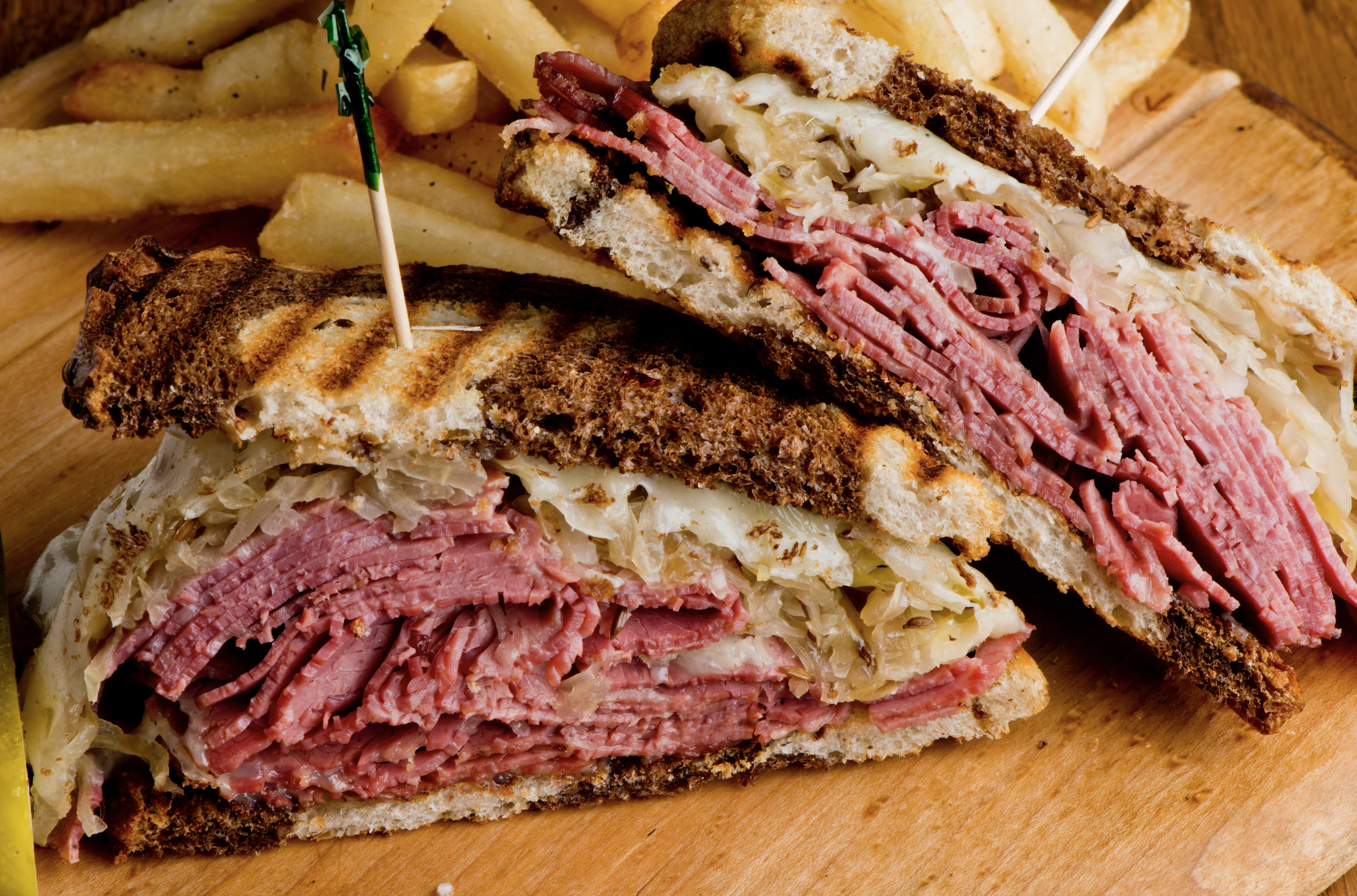SHOP ONLINE >
You can consider pastrami to be somewhat authentically American. Immigrants from Romania who immigrated to the United States during the late 19th century invented the traditional New York deli meat prepared from seasoned, smoked, and cured beef. But pastrami and the peppery spice mix that goes with it have a history that predates beef and the 19th century.
The Artisan Jewish Deli at Home claims that pastrami’s jerky-like ancestor, pastrami, was created by Ottoman Turks who dried, salted-cured, and spice-rubbed meat (often beef, goat, or sheep) to preserve it.
Along the spice route, the dish spread to Eastern Europe and eventually settled in Romania, where they modified it, and geese replaced chicken as the popular meat. To conserve money, Romanian immigrants who settled in New York shifted from utilising geese to the affordable and widely available beef brisket, particularly the navel cut.
The invention of refrigeration allowed Romanian immigrants to create a softer version of pastrami using milder salt brine. Pastrami’s name was changed from pastramă in Romanian to pastrami for unknown reasons. Still, one idea holds that it was because it rhymed with salami and was available at the same delicatessens.
It is not the meat itself that gives pastrami its flavour
While it’s possible that you mistakenly believe that the pastrami flavour originates from the brisket used to make it, the truth is that the method used to prepare the beef gives it its flavour. Technically, any form of meat, like a lamb, salmon, or even vegetables, can be “pastramied,” according to the culinary website. The process begins with bringing the meat, which is done by marinating it for up to a week in a mixture of salt, sugar, and other spices. The eater continues by describing how the meat is seasoned with a hot concoction of coriander, pepper, mustard, fennel, and garlic.
The flavour truly comes from here. The original method involved packing the meat inside saddle bags, where the riders’ legs would press the meat as they rode. The current recipe in Turkey involves curing beef by smearing it in salt, letting it dry for a few days, and then slathering it in a heavy spice rub.
Pastrami making
Simply put, Beef Pastrami is smoked corned beef. Making your pastrami is relatively simple if you purchase corned meat. Of course, if you had three weeks to allow it to cure, you could also prepare homemade corned beef from scratch.
What you’ll require is:
- One corned beef
- A good pastrami rub
- Fuel for your smoker
- Mild flavour wood chips
- A good meat thermometer
For smoke, choose mild wood. Anything too powerful will drown out the pastrami flavour. Apple and cherry woods, also other soft woods like maple and oak, work well.
Checking Your Corned Beef
Use a square-shaped, uniformly thick corned beef. It will ensure even smoking throughout the corned beef and result in flavourful pastrami.
Making Corned Beef
Cure you beef in a brine of salt, water, honey and vegetable extract. This will give the beef flavour and preserve the meat so it can be enjoyed for many days after cooking and smoking. Leave the beef submerged in the brine for 2-3 days.
Rubbing Pastrami
Numerous different spice rubs may be used to season pastrami, giving it a distinctive flavour. Most of these flavours are mainly composed of ground coriander and black pepper. The main herbs and spices that provide pastrami its distinct flavour are listed above. Applying a heavy layer of rub is recommended. On the pastrami’s surface, this will produce a crust.
Smoking your pastrami
For each pound of pastrami, you must smoke it for roughly an hour. It is dry pork, and there is no need to worry about drying it out. The meat needs to be cooked down and given a Smokey flavour. Maple is a common wood to use while creating pastrami. Additionally, you can prefer using woods like apple, cherry, or grape.
Putting out the Fire
When the Smoked Beef reaches an internal temperature of 165 F, your pastrami is ready. The corned beef ought to have shrunk down by 10% to 20%, and the outside of the corned beef ought to be almost entirely black. Since corned beef is cured, it doesn’t need to be cooked to a specific temperature, but by the time it reaches 165 F, the taste will have fully developed, and the flesh will have absorbed all the smoke required.
Slicing up pastrami
The pastrami needs to be finished before you can begin slicing. You will need a sharp knife to do this if you don’t have a meat cutter. It will cool off most quickly in the refrigerator over a while. The meat can be readily sliced once it has cooled. Very thin slices are essential for making superb pastrami.

